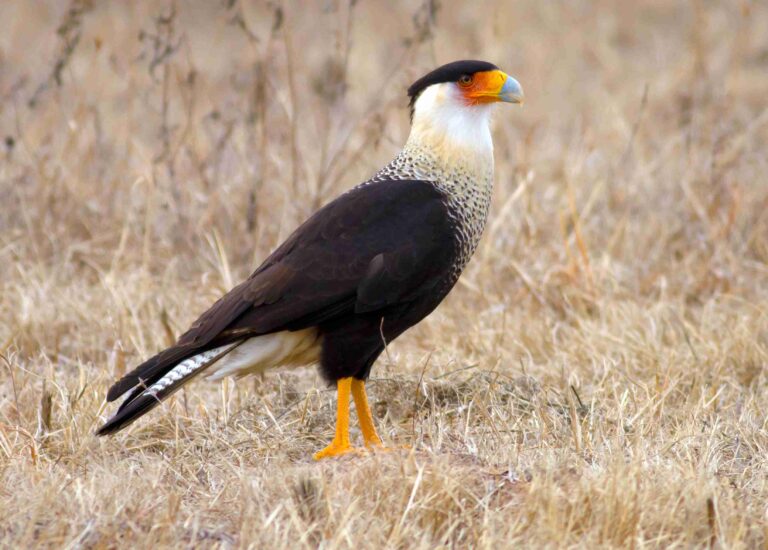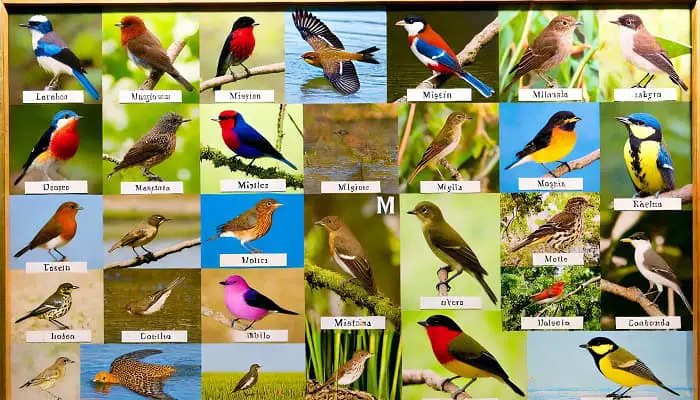15 Types of Birds That Lay Blue Eggs (With Pictures)
Did you know about 10% of birds lay blue eggs? This fact shows the beauty and variety of bird life. Birds with blue eggs amaze birdwatchers and nature fans with their bright colours.
These blue eggs are not just pretty. They help the birds survive and grow. In this article, we’ll look at why blue eggs are important. We’ll also find out which birds lay them and how they nest.
The Fascinating World of Bird Eggs
Exploring bird eggs shows us how colours and factors affect them. The colours of eggs are key for bird reproduction and survival.
What Determines Egg Color?
Egg colours come from genes and the environment. A pigment called biliverdin makes eggs blue. Different birds have various shades, from sky blue to teal, showing their genetic variety.
The Significance of Coloration in Bird Eggs
Egg colours have many uses in nests. Bright colours mean the mother bird is healthy, leading to stronger babies. Colours also help hide eggs from predators.
This helps baby birds survive. It shows how egg colours are important for birds to reproduce.
Why Do Some Birds Lay Blue Eggs?
Blue eggs in some bird species have a special reason. They look great and serve a purpose. The pigment biliverdin makes them blue, and it’s good for the birds during their egg-laying time.
The Role of Biliverdin in Egg Color
Biliverdin comes from breaking down heme. It makes the eggs blue. This pigment also makes the eggs strong and safe.
It protects the eggs from harmful UV rays. This is good for the growing babies inside. It helps them grow healthy.
Benefits of Blue Eggs for Developing Embryos
Blue eggs are great for the babies inside. They protect from UV rays and keep the right temperature. The color shows how healthy the baby is.
This is why blue eggs are important. They help birds have healthy babies.
Birds That Lay Small Blue Eggs
Blue eggs are a fascinating part of bird life. Many bird species lay blue eggs, each with its own nesting habits and behaviours. Learning about these birds reveals the beauty of nature and their role in the ecosystem.
1. American Robin and its Iconic Blue Eggs
The American Robin is famous for its bright blue eggs. These eggs are shiny and are laid in a nest of twigs, grass, and mud. The robin carefully places its nest in wooded areas or gardens.
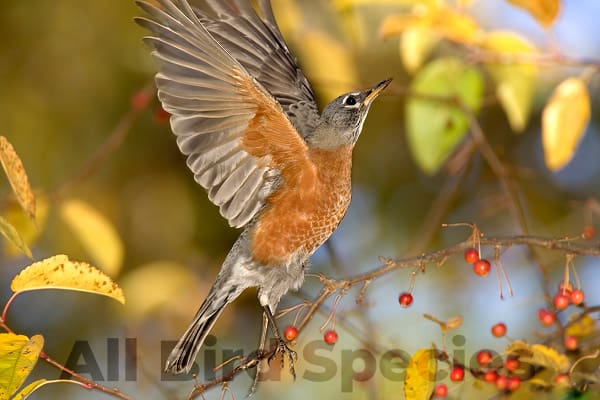
This ensures the eggs’ bright colour stands out. It also keeps the eggs safe from harm.
2. Blue Jay and Its Nesting Habits
Blue Jays are known for their nesting skills. They build strong nests high in trees. Their eggs are smaller than the American robins and can be greenish or blue.
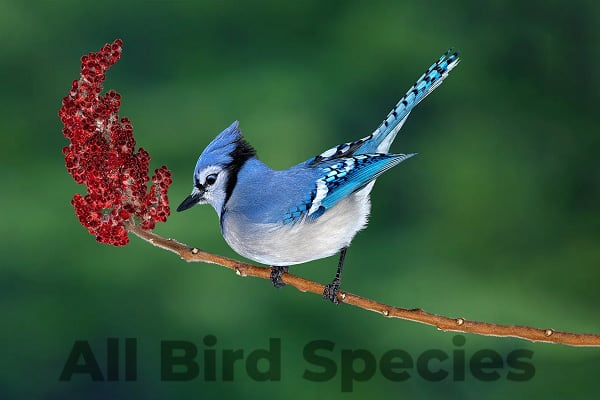
Blue Jays are adaptable to different environments. This makes them interesting to watch.
3. House Finch: The Delightful Egg Layers
House Finches are found in urban areas. They lay pale blue-green eggs in nests made of plants. Their eggs often have speckled patterns.

This adds to the uniqueness of their nests. Their caring behaviour helps them breed well in various places.
4. European Starling
The European Starling is often missed when talking about blue eggs. Also, Their eggs are pale blue with dark markings. Their nests are simple and found in trees or human-made structures.
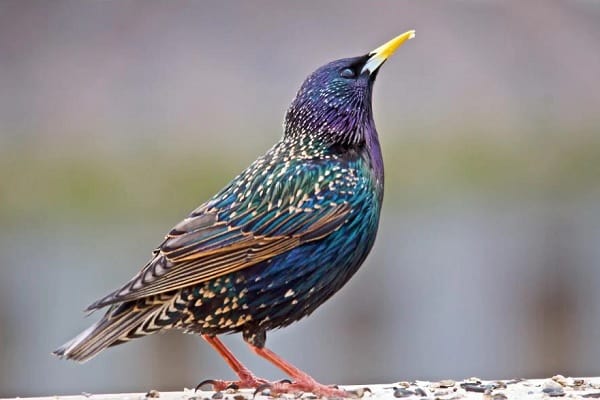
Their ability to adapt to different places is impressive. Also, Their interesting nesting habits are worth exploring.
Features of Blue Eggs Across Different Species
Blue eggs are not just pretty; they also show amazing differences. The color can change a lot, depending on the bird and its environment. Some eggs are bright blue, while others are a soft, icy blue.
These changes can happen for many reasons. For example, the health of the mother bird and how stressed she was when laying the egg can affect the color.
Variations in Shade and Pattern
Bird eggs come in many colors and patterns. Some eggs are plain, while others have beautiful speckles. These differences are not just for looks.
They also tell us about the health of the mother bird. If a mother is stressed, her eggs might look different. This could affect how well the baby birds do after they hatch.
Comparison of Blue Eggs Within the Same Nest
Even in the same nest, eggs can look very different. This is especially true when birds like cowbirds lay their eggs in other birds’ nests. You might see eggs that are bright blue and others that are not.
This shows how complex bird reproduction is. It also shows how different bird species interact with each other.
| Species | Typical Egg Color | Common Patterns |
|---|---|---|
| American Robin | Bright Blue | Unmarked |
| Blue Jay | Pale Blue | Speckled |
| House Finch | Light Blue | Unmarked |
| European Starling | Ice Blue | Mixed Patterns |
Learning about these differences helps us understand these colorful eggs better. It shows how important they are in the world of birds.
The Importance of Blue Egg Color in Nesting
The color of bird eggs, especially blue ones, is very important. It helps protect the eggs and keeps hatchlings healthy. This shows how amazing bird life can be.
Predator Confusion and Egg Protection
Blue eggs blend in with their surroundings. This makes it hard for predators to find nests. It helps more eggs hatch safely.
Birds with blue eggs often have better nesting success. Their nests are less likely to be found. This gives their babies a safer start.
Health Indicators for Hatchlings
The color of an egg can tell us about the health of the hatchling. Blue eggs usually mean the mother is healthy. This means the baby is likely to be strong too.
But, eggs that are damaged or dull might mean problems. These problems could affect how well the baby grows. Healthy babies are more likely to survive and thrive.
Unique Nesting Behaviors of Blue Egg Laying Birds
Nesting behaviors are key for birds that lay blue eggs to survive. The American Crow and the Wood Thrush show interesting ways to raise their young. Their methods show how adaptable and careful they are as parents.
5. American Crow’s Nesting Strategies
The American Crow uses smart nesting strategies. They build big stick nests high up in trees. This keeps them safe from many predators.

Their nests are strong, made from twigs, grass, and sometimes human stuff. Crows are very caring parents. They watch their nests closely and feed their chicks with love.
6. Wood Thrush
The Wood Thrush builds nests in a special way. They use leaves, mud, and grass to make nests that look like the surroundings. Their nests are in dense underbrush for extra safety.
They can have more than one brood in a season. This shows how well they adapt and care for their young.
| Bird Species | Nesting Material | Nest Location | Parenting Style |
|---|---|---|---|
| American Crow | Twigs, grass, human-made items | High in trees | Highly attentive, protective |
| Wood Thrush | Leaves, mud, grasses | Dense underbrush | Solitary incubation, multiple broods |
Environmental Factors Affecting Egg Color
Understanding how the environment affects egg color is key. Climate and food sources play big roles. They influence the colors of bird eggs.
Impact of Climate on Egg Development
The climate affects egg development in many ways. It changes the eggshell’s thickness and color. For example, warmer temperatures and more humidity can make eggs more colorful.
When it’s warm and food is easy to find, eggs get richer colors. But, in harsh climates, eggs might be paler. This shows stress or less food.
How Food Sources Influence Egg Color
A bird’s diet greatly affects egg color. Nutrients like carotenoids and omega-3 fatty acids are crucial. They help create the bright colors we see.
Birds with varied diets lay eggs with deeper colors. But, a limited diet can make eggs less colorful. This shows how important food is for egg color.
Conservation and Blue Egg Laying Birds
Many bird species, like the American Robin and Eastern Bluebird, face challenges. These include habitat loss and environmental changes. It’s crucial to protect these birds and their homes.
By raising awareness, we can help communities support local wildlife. You can join local efforts to save these important ecosystems.
Efforts to Protect Their Habitats
Organizations in the U.S. are working hard to save blue egg laying birds. They focus on keeping wetlands, forests, and grasslands safe. These places offer homes and food for birds.
Even small actions help a lot. Planting native plants and using fewer pesticides in your yard is important. Also, supporting responsible development is key.
The Role of Nest Boxes in Bird Populations
Nest boxes are a great way to help these birds. They give safe places for Bluebirds and American Robins to nest. If you have a yard, you can put up a nest box.
Joining local birdwatching groups that use nest boxes is also helpful. Your help can make a big difference. It ensures these birds will be around for future generations.
Read More🐦Related Articles:
- White Birds in Florida with Long Beaks
- Orange Butterfly Meaning
- Finches in Michigan
- Finches In Hawaii
- Birds With Red Beaks
FAQ’s About Birds That Lay Blue Eggs
Q1: What bird has blue eggs?
Various bird species have blue eggs, including robins, bluebirds, and starlings.
Q2: Which bird lays blue eggs in India?
The Indian Robin is one of the bird species in India known for laying blue eggs.
Q3: Why do bird eggs turn blue?
The blue color of bird eggs is often due to pigments called biliverdin and protoporphyrin, which are deposited on the eggshell during formation.
Q4: Which bird lays red eggs?
The House Finch is known for laying red or pinkish eggs.
Q5: Who lays blue eggs?
Several bird species lay blue eggs, including robins, bluebirds, and some species of jays.





